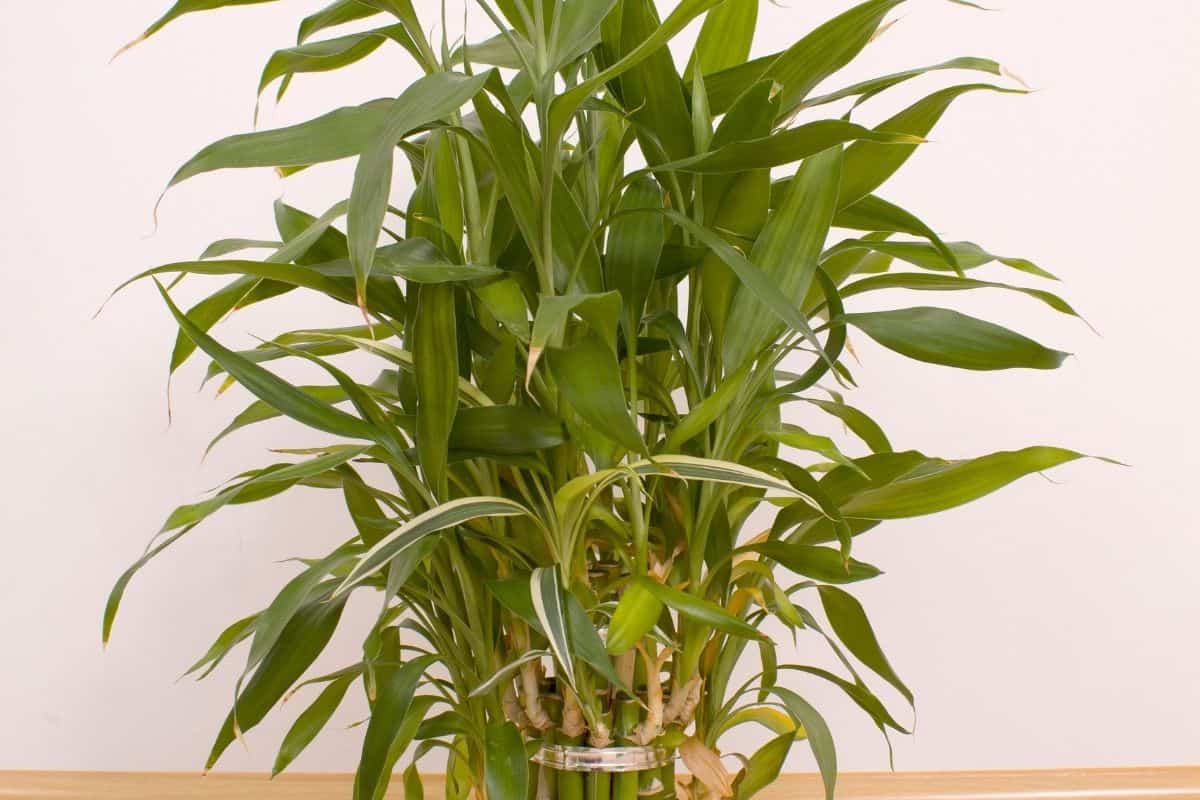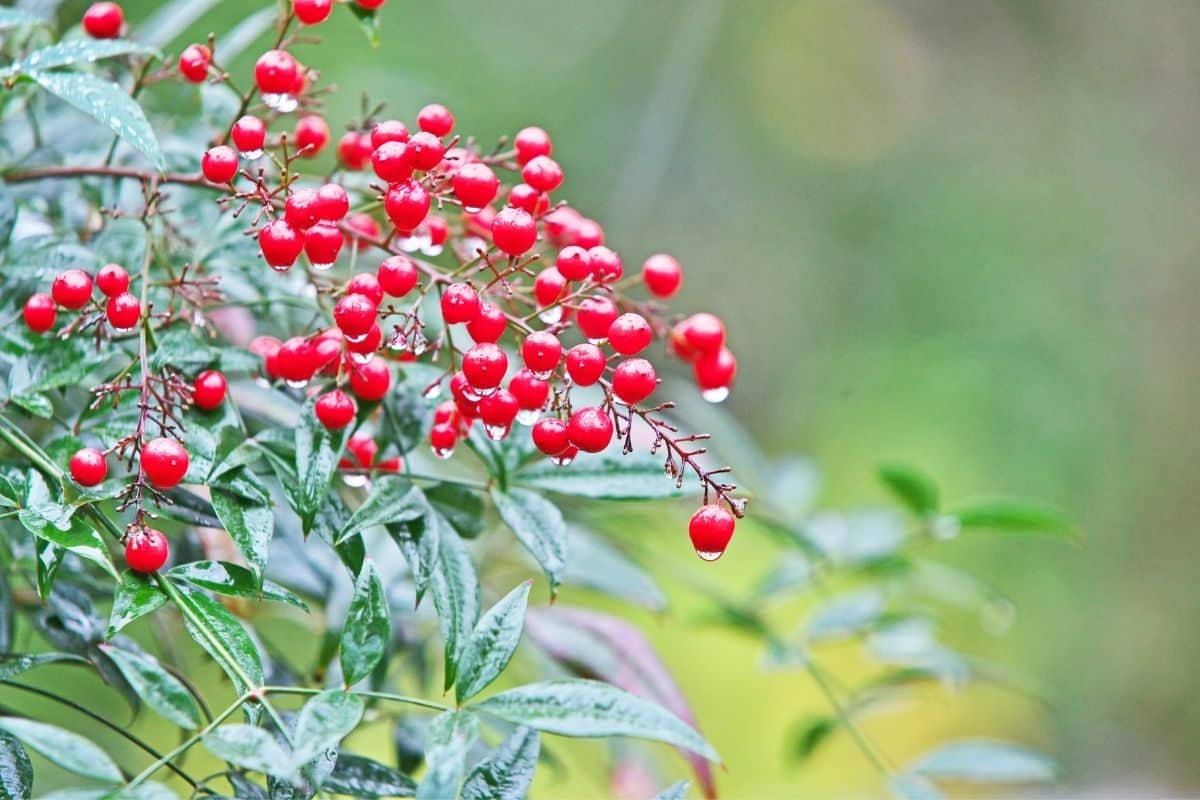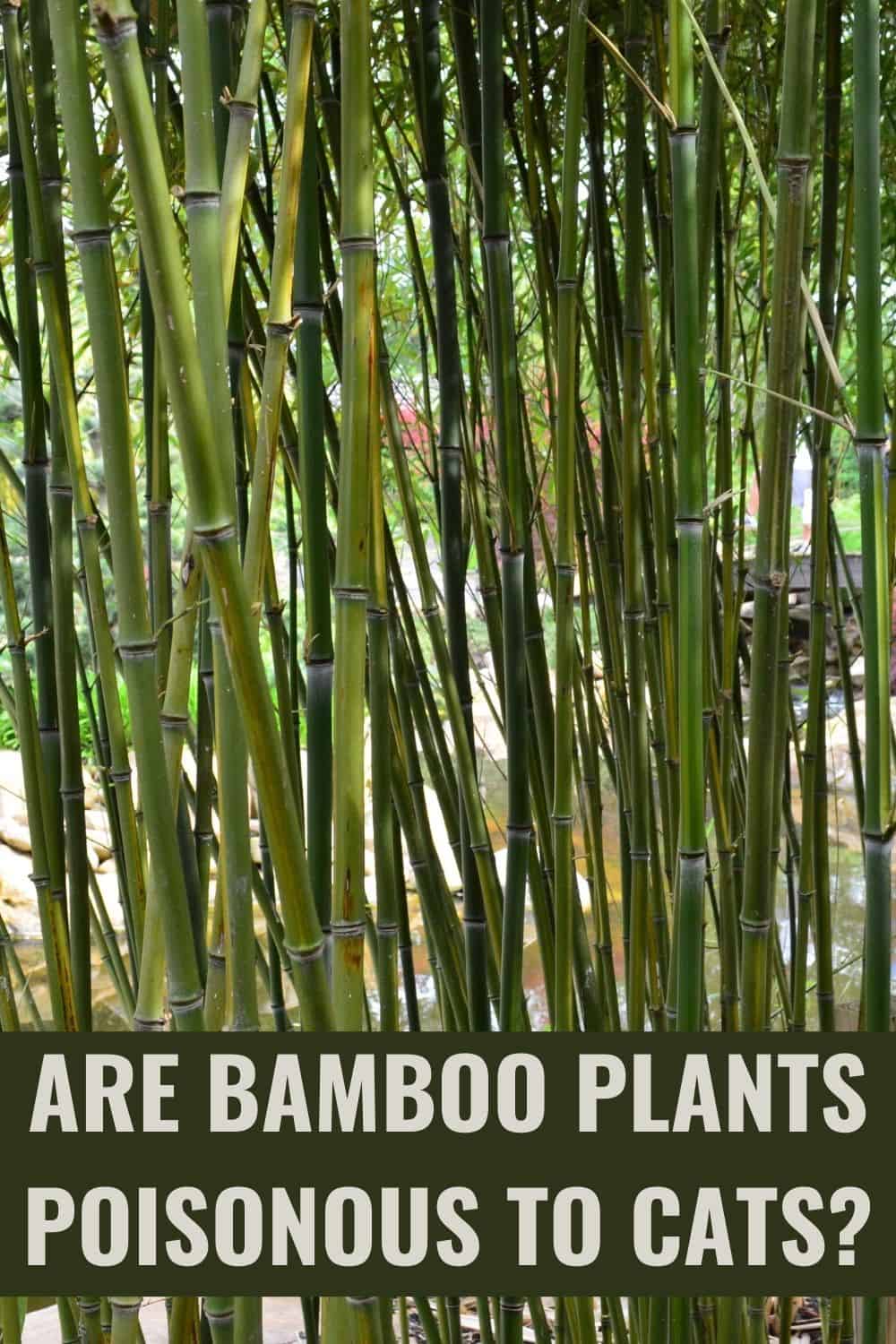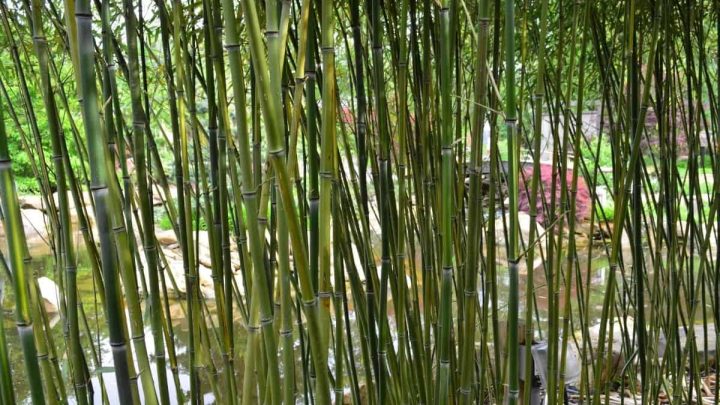Coming home to our pets is an essential part of an animal lovers’ day. Your home needs to be a place where you can unwind and relax. Introducing plants to your home creates a very calming environment for you and your pets. The infamous Bamboo plant is considered one of the most tranquil plants in our modern age but, are Bamboo plants poisonous to cats?
While natural Bamboo species are not poisonous to cats, lookalike Bamboo plants are. Cats need to ingest a huge amount of the toxic Bamboo plant before they will show any poisoning symptoms, which could include diarrhea, vomiting, and in very severe cases seizures.

However, you also get lookalike Bamboo plants such as the “Lucky Bamboo” and the “Heavenly Bamboo,” which are poisonous to cats. Some species have Bamboo in the name but are not Bamboo at all.
Are Bamboo Plants Poisonous To Cats?
Before purchasing your Bamboo plant, you need to make sure you do the proper research to ensure you are purchasing natural Bamboo instead of “lookalike” plants. Actual Bamboo is a type of grass ranging from small dwarfs size plants, and some can grow up to 30m tall.
There are over 100 registered edible Bamboo in the world. And it is more likely your feline will do more damage to the plant than the other way round. However, some plants appear to be Bamboo but are a genetically altered hybrid designed to look the same but are nowhere close to natural Bamboo genetically.
Cats are considered carnivores, and plants usually don’t make up part of a cat’s diet. However, cats will nibble on plants occasionally, and therefore when selecting plants for indoors or outside, you need to make sure they are considered safe for your cat.
Related: Are spider plants poisonous to cats?
Natural bamboo plants
There are natural Bamboo species that are safe to place in your home. These include:
Phyllostachys aurea
More familiar names are Bamboo, Fish pole Bamboo, or Golden Bamboo.
The Golden Bamboo is not considered poisonous, and in traditional medicine, the shavings of this plant are sometimes used to treat fevers, nausea, and vomiting.
Smilax laurifolia
More familiar names are Bamboo Vine, Blaspheme Vine, or LaurelLeaved Greenbrier.
Chamaedorea Elegans
More familiar names are Good Luck Palm, Reed Palm, Dwarf Palm, Bamboo Palm, Parlor Palm, or Miniature Fish Tail. The Chamaedorea Elegans, most commonly known as the Bamboo Palm, is one of NASA’s Clean Air types and favorites in indoor plants.
These are all safe to place in your home and fine for your cat to ingest. However, a cat can ingest too much and may experience some bloat or even vomiting, but this is normal. It’s important to know what species of bamboo you have so that you can be sure your cat is safe.
What Bamboo Is Poisonous To Cats?
In some versions, a plant can look like Bamboo and even have the name “Bamboo,” but it is not related to the real Bamboo family. Unfortunately, in many cases, some of the staff at our local greenhouses or plant nurseries do not know the difference between natural and lookalike Bamboo.
Below are some lookalike Bamboos to avoid if you have a cat.
Dracaena spp

More familiar names are Dragon Tree, Cornstalk Plant, Lucky Bamboo (Dracaena Sanderiana), Money Tree, Ribbon Plant, Corn Plant, or Dracaena.
Nandina Domestica

More familiar names are Sacred Bamboo, Heavenly Bamboo, or Nandina.
It is good to know that some of these Bamboo shoots contain a substance called taxiphyllin that can cause cyanide poisoning in cats, lead to severe illness and even be fatal to your cat if he ingested more than the feline safe limit.
What Happens When Your Cat Eats A Poisonous Bamboo Plant?
Although fatalities when ingesting poisonous Bamboo are rare, they can occur. Cats are not known to eat plants in general, but it might be more out of curiosity. Fortunately, a cat’s body will immediately become aware of the situation and try to regurgitate it as soon as possible.
Some common side effects to identify if your cat has ingested poisonous Bamboo include:
- Dilated pupils
- Nausea or vomiting that can include blood
- Drooling
- Diarrhea
- Coordination problems
- Respiratory difficulties or failure
- Seizures
- Coma
- Excessive panting
- Abdominal pain
- Appetite loss
- Increased heart rate
- Weakness
- Depression
What Are The Steps To Follow If Your Cat Eats Toxic Bamboo?
The best advice is that prevention is better than cure. Making a diagnosis can be tricky. However, if your cat is showing any symptoms and you suspect that your cat has consumed poisonous Bamboo, the most important tip is to remain calm as cats can sense your unrest and decide to run away or hide from you. Call and speak to your cat in a calm and soothing tone while removing the cat from the plant.
Secure your cat in a cat box or travel safe cat bag and take him to the vet. Be sure to take a sample of the plant so that you can show your vet, and he will have the necessary information for proper treatment.
What Amount Of Bamboo Leaves Are Toxic To Cats?
Out of boredom or curiosity, your cat may nibble on plant leaves. The leaves of poisonous Bamboo are not the part of this plant that should have us most worried. A cat needs to eat a huge amount of poisonous leaves before it will show any symptoms.
When it comes to poisonous bamboo, where the Lucky Bamboo is the most common, we need to look out for the shoots and stem of the plant as these are known to contain the most toxiphullin and saponins, which is the poisonous part of the plant.
It is also shown that although cats can be spontaneous and have a sudden burst of energy and sometimes cause havoc, they are very curious. You might find your cat swatting a leaf or two, but it is unlikely that your cat swallows parts of the plant.
How To Stop Your Cat From Eating Bamboo Leaves?
Cats are susceptible to smell. So making your plants smell vile to cats can be one way of getting them to stop eating Bamboo. Cats do not like the smell of Cayenne pepper, so try sprinkling some on the plant’s soil or even placing it in small organza drawstring bags and hanging it from parts of the Bamboo plant.
They also do not like the smell of citrus at all. Use a lemon or Orange peel and place it on the soil to keep your cat from eating these leaves. Again, these can also be hung from the plant itself in small organza drawstring bags.
Over-the-counter pet sprays are also a good tip, but make sure to use sprays specially designed for pet repellent as any other can be toxic to the cat or even your Bamboo. It is advisable to test a small leaf first before spraying the entire plant. Allow 24 hours before spraying the entire plant or as directed on the instructions.
Making a do-it-yourself solution that uses one part vinegar and three parts water can also be the answer to your problem, but I will suggest testing it on one of the leaves first before spraying the entire plant. Most cats usually do not like the smell of vinegar.
You can also try placing your plants strategically. Make sure to place them in rooms your cats do not visit or on high, out-of-reach counters? Just remember to water your plants if placed on surfaces where they are not seen constantly.
Cat-safe plant alternatives
If you have a cat who loves plants and you want to offer some alternatives that won’t make your feline friend sick, consider getting cat grass (try this organic blend). You can find this safe alternative at your local pet store, as well as online. You can buy it already grown in, or you can buy kits to plant your own and grow at home to keep your furry friend happy all the time.
For anyone who loves plants and cats, an investment in cat grass just makes sense!
Conclusion
While Feng Shui is very fashionable in the modern age, and plants such as the Lucky Bamboo are some of the most commonly used plants in this movement, it is wise to make sure you consider your feline friends at home.
It is not pleasant to hear that such a beautiful plant is poisonous to pets, but if keeping our cats happy requires us to skip a few aisles in the flower nursery, then we will do just that for the sake of our cats. However, if you are a lover of the easy-growing deep green Bamboo plant, be sure to plant the nontoxic version, and rest assured your cats will love them just as much as you do.
Do you have any tips about keeping your cat safe from the bamboo plants that you would add?






